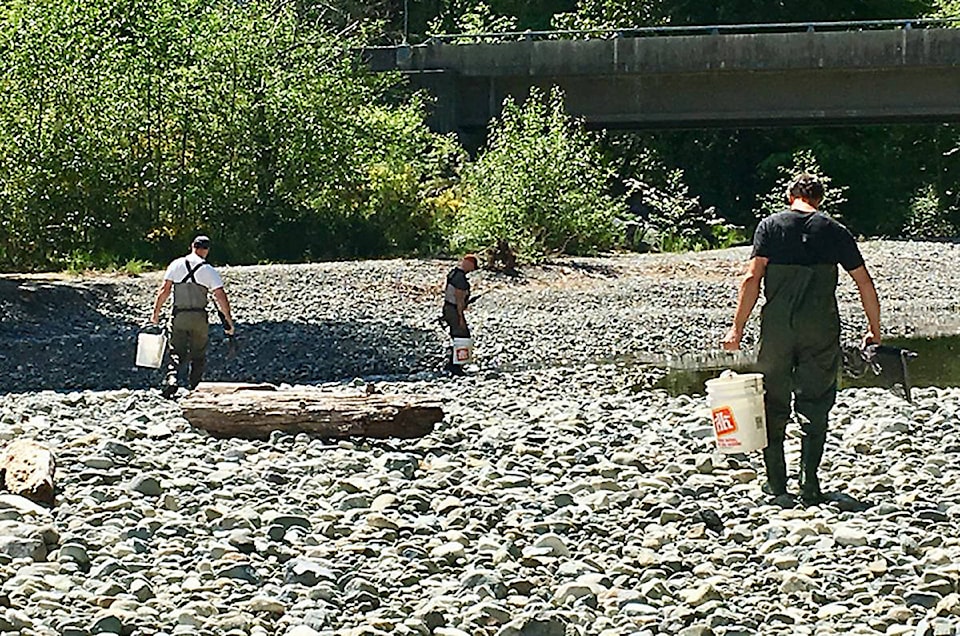A group representing 49 agencies in the Cowichan Valley called on elected officials representing five local governments (CVRD, North Cowichan, Duncan, Lake Cowichan and Ladysmith) to declare a climate emergency.
A letter, endorsed by labour unions, churches, non-profit societies and residents associations and a petition containing the signatures of more than 600 local residents demanded that local government act more directly on what’s happening.
While climate disruption is a global challenge, it affects everyone. That’s why, says Jane Kilthei of One Cowichan, “local governments across the island (including the Capital Regional District, Nanaimo, Victoria, Sooke, Colwood, Equimalt, Sidney and Saanich) have declared climate emergencies, as well as hundreds of other communities across Canada.”
She’s keen to get more action going locally.
“In speaking with the letter’s signatories, it is clear to us that people throughout the Cowichan Valley are deeply concerned about the accelerating climate crisis, including the impacts we are already experiencing locally.”
The request to local government was issued July 3, and called for “dramatic acceleration on climate change.” Local government, the letter claims “is where the rubber hits the road” on this tough subject, reminding that “the most vulnerable among us will be most affected.”
“Energy use, particularly for transportation…comprises our largest block of emissions here in the Cowichan Region,” the letter tells elected officials.
Boards’ and councils’ decisions may also help determine how much stored carbon is left on the landscape in trees and soils. And local governments have to deal with climate impacts such as increased drought and flooding.
“Our municipal infrastructure was built based on conditions that are now shifting rapidly,” she said.
The politicians are being asked to do more than “declare a climate emergency”, however.
They are being asked to “follow through to take our community from options to positive changes actually rolling out on the ground.
“We urge you to act boldly, as the hour is late,” the letter concludes.
Chief William Seymour said the Cowichan Watershed Board has talked extensively about this issue.
“We do need to push our leaders and government to look seriously at what we can and can’t do. What I consider today is an emergency: my fish are going to be gone!
“The water is not there. There are so many things that need to happen. We look at Lake Cowichan, that’s a good place to start. That’s our reservoir. You look at all the tributaries that feed that lake and there’s only one that’s running right now and that’s Shaw Creek. There’s nothing there.
“There’s a lot of gravel in those tributaries. We know where the gravel comes from and why it’s there. It’s the clearcutting that happened. If you head down from Lake Cowichan to Cowichan Bay, it’s the same with the river, all the tributaries are dry now.
“The lake used to get low before the weir went in. I was told that. But when the water went down, the tributaries kept flowing into the river. Now there are no trees to hold back water. So, when it rains, it goes straight into the creek, the creek goes straight into the river, washing all the gravel down and blocking up the creek so that nothing can get up there any more.
“So, there’s a lot of work to do on those tributaries, on the river. Cowichan Tribes has been fighting for sustainability in our rivers since the early 1980s. We’ve actually shut down fishing on our river to our community members when the river gets low. We’re looking at July to October for them not being able to fish. And that’s not fair to our community members,” Seymour said.
Plant life is also affected, Seymour said.
“Our trees are slowly drying. A lot of our plants — salal is a good example — they’re brown now. Those are the kinds of things we need to look at,” he said.
Kilthei said One Cowichan had a strategy session in the spring.
“Climate change was big in everybody’s mind. The UN report last October outlined how much more quickly the climate crisis is moving. We’ve had droughts year on year and this one just seems so much dramatically worse. The awareness is much stronger and people, when I talk to them, have feelings ranging from anxiety to despair. They want to see action on all levels of government but particularly on the local level.”
So, what action might we see?
“We’re not saying that local government hasn’t done anything. There’s been some good research done. There’s been some award-winning climate action plans, and things just need to move faster and stronger in order to be meeting the response that’s called for in the level of climate breakdown we’re seeing,” she said.
For Kilthei, “the biggies” are land use, housing developments, and transportation.
Housing developments may not spring to your lips when you’re talking climate change but Kilthei thinks they should.
“The problems of large lots, large houses, distance from services. Maple Bay is an example. You can’t actually access services of almost any kind: local groceries, local pharmacies. People are having to drive to those kinds of things. Transportation really is an issue. We need to not only work on densification and making it easier for families to live together, but there are all kinds of things in terms of smart building codes, requiring permeable driveways so the water gets back into the water table,” Kilthei said.
From detail to full scene, development needs a close look.
“Those are the kinds of things that are going to reduce our carbon footprint.”
